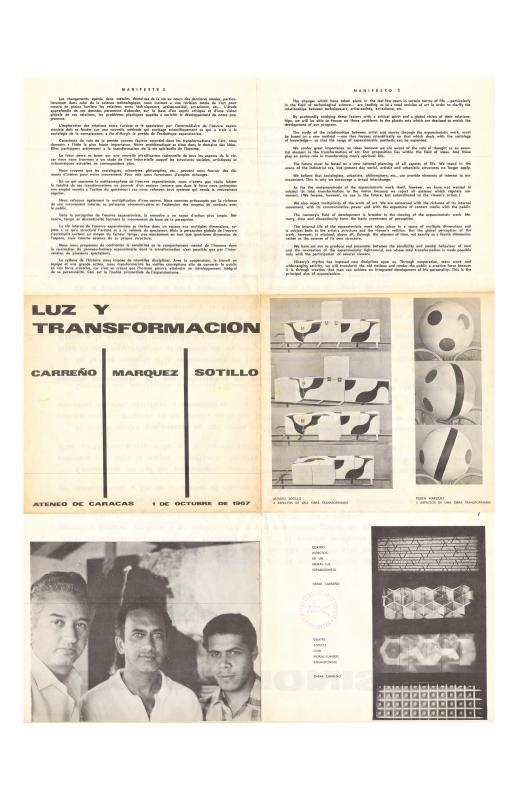The interrelationship between the expressive resources of the paintings, on the one hand, and the three-dimensional, changeable, and Kinetic works, on the other, of the Venezuelan artist Omar Carreño (1927?2013) is the focus of this essay by the Venezuelan critic Víctor Guédez. Carreño’s career seems to prove that concepts and solutions can move from the plane to three-dimensional structures with no loss of expressive power; all the more so if they remain within the boundaries of the constructive movement. On this matter, Guédez acknowledges the dual attributes of rigor and experimentation that allow Carreño to maintain the consistency of his ideas even when he alternates between one support and another. We should also keep in mind similar and less fortunate “transits” (perpetrated by other artists) and indeed the mixed media of the art scene in the 1980s. The retrospective look at his career, and body of work, took place at a time when Carreño’s work began to be noticed according to those criteria: a highly successful retrospective exhibition was organized in 1983 at the Museo Español de Arte Contemporáneo in Madrid, and was re-installed at the Museo de Bellas Artes in Caracas in 1984. The success of the exhibition, and the inevitable re-thinking of Carreño’s work, turned the discussion to the subject of the formal language and internal dynamic of his development; they also introduced ideas about identity and multiple relationships that were addressed once again during that decade both within and without the Latin American constructive movement.
Regarding the expansionist manifesto signed by Carreño and a group of Venezuelan artists, see “Expansionismo: Manifiesto 1” [doc. no. 1157270] and “Expansionismo: Manifiesto 2” [doc. no. 1157254]; and, to read Teresa Alvarenga’s interview, see “Llegó el momento de decir: Omar Carreño lo hizo primero” [doc. no. 1157657].



